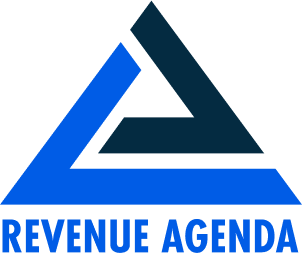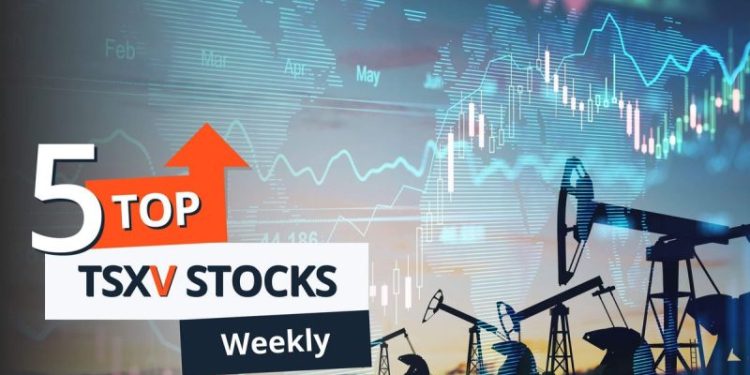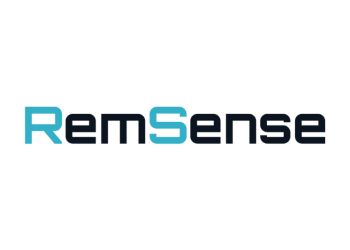The S&P/TSX Venture Composite Index (INDEXTSI:JX) lost 23.77 points last week to close at 555.56. Meanwhile, the S&P/TSX Composite Index (INDEXTSI:OSPTX) lost 587.18 points to close at 22,227.63.
The US Bureau of Labor Statistics released its Employment Situation Summary this past Friday (August 2). It points to softening employment, with 114,000 jobs added in July, significantly lower than analysts’ predictions of 175,000.
The release also shows a 0.2 percent rise in the unemployment rate to 4.3 percent, with the number of unemployed people increasing by 352,000 to 7.2 million. While the uptick in unemployment could be a sign of an underlying recession in the country, it comes without the wave of layoffs typical during those conditions. Permanent job losses remained steady at 1.7 million, although temporary layoffs rose 249,000 to come in at 1.1 million.
The monthly job figures show a more pronounced softening in the laborforce, and will likely add fuel to the US Federal Reserve’s policy decision when it meets in September. At the moment, 72.5 percent of Fed watchers are leaning toward a 50 basis point cut to the benchmark rate versus the 78 percent predicting a 25 basis point cut just one week ago.
Statistics Canada released an industry breakdown for May GDP this past Wednesday (July 31). The report shows a 0.6 percent contraction in the mining, quarrying and oil and gas extraction sector. The decline was attributed to a 2.1 percent pullback in oil and gas, which includes a 3.5 percent decrease in oil sands extraction — the largest since January.
Declines were offset by 0.5 percent growth in mining and quarrying, the seventh increase in eight months. Gains were supported by 2.7 percent growth in non-metallic mineral mining, including a 7.1 percent rise in potash mining.
Markets saw post-rate decision gains erased at the end of the week, with the S&P 500 (INDEXSP:.INX) losing 1.84 percent on the week to close at 5,346.55 points, the Nasdaq-100 (INDEXNASDAQ:NDX) falling 2.38 percent to close at 18,440.85 and the Dow Jones Industrial Average (INDEXDJX:.DJI) shedding 1.51 percent to end the week at 39,737.27.
Commodities were also down, with the S&P GSCI (INDEXSP:SPGSCI) ending the week 2.08 percent lower at 533.05. Meanwhile, precious metals were up, with gold posting a gain of 2.37 percent on the week to reach US$2,443.62 per ounce. For its part, silver climbed 2.33 percent to hit US$28.58 per ounce as of 4:00 p.m. EDT on Friday.
Read on to learn about the five top-gaining mining and energy stocks on the TSXV last week.
1. Tuktu Resources (TSXV:TUK)
Weekly gain: 70 percent; market cap: C$10.14 million; share price: C$0.085
Tuktu Resources is an oil and gas development company focused on expanding its footprint in the foothills of Southern Alberta, Canada. The company started working in the region in December 2022, when it entered into a purchase agreement for a 19 section land package on the eastern edge of the Alberta thrust belt that included a single well. Tuktu has since expanded its holdings in the region to 26.4 sections and 20 horizontal well locations.
In its 2023 results, released on April 25, the company reported proven and probable oil and gas reserves of 127.6 million barrels of light and medium oil and 8.99 million cubic feet of natural gas.
The most recent news from Tuktu came this past Tuesday (July 30), when it announced that testing at an oil zone in the region’s deep basin, for which it recently closed its farm-in agreement, resulted in a successful light oil discovery.
According to Tuktu, “This discovery more than triples Tuktu’s oil production and delineates a new oil fairway.” During the final seven hour period of testing, the well produced at rates between 327 and 383 barrels of oil per day.
Samples have been submitted for further analysis, and the company said it will also provide updates on the well’s performance over the next one to three months.
2. Mogotes Metals (TSXV:MOG)
Weekly gain: 66.67 percent; market cap: C$25.53 million; share price: C$0.20
Mogotes Metals is an explorer working to advance its Filo Sur copper-gold-silver project, which straddles the border between Argentina and Chile in the Vicuña copper district. The company began trading on the TSXV on June 11.
The Argentinean portion of the site, representing the bulk of the land package at 8,118 hectares, is currently the subject of an earn-in agreement with Golden Arrow Resources (TSXV:GRG,OTCQB:GARWF), a member of the Grosso Group. Under the deal, Mogotes has the ability to acquire an 80 percent share of the property in exchange for C$5 million in exploration expenditures and C$1.75 million in payments on or before May 4, 2027.
Shares of Mogotes saw gains this past Wednesday after the company announced assay results from rock chip and trench channel samples. Rock chip samples returned grades up to 1.32 grams per metric ton (g/t) gold and 94.3 g/t silver, while trench samples returned average results of 0.23 g/t gold, 1.4 g/t silver, 620 parts per million (ppm) copper and 461 ppm zinc. Magotes said further exploration of the area will help to provide drill targets.
3. Golconda Gold (TSXV:GG)
Weekly gain: 41.67 percent; market cap: C$24.59 million; share price: C$0.34
Golconda Gold is a gold production company with mining operations in New Mexico, US, and South Africa.
The company acquired the Galaxy mine near Barberton, South Africa, in 2015. It is one of the oldest mines in the country. Golconda expanded its holdings to the US in May 2021, when it acquired the Summit mine and Banner mill, located in Grant County, New Mexico. The site has hosted mining activities since the late 1800s.
In mid-May, Golconda announced it had begun mining the Princeton Top deposit at Galaxy, a move it said will help it achieve its goal of doubling gold production in 2024.
Its most recent news came on May 29 with the release of its Q1 financial and operating results. Golconda increased its production in Q1, during which time it processed 1,095 metric tons of concentrate at an average grade of 42.8 g/t gold for 1,507 gold ounces. The amount represents an increase of 15 percent over the 1,314 ounces produced in the previous quarter. The company also said it generated C$2.2 million from the sale of 1,099 ounces of gold.
Golconda did not release news this past week, but still saw a large increase in its share price.
4. Falcon Energy Materials (TSXV:FLCN)
Weekly gain: 41.51 percent; market cap: C$84.52 million; share price: C$0.75
Falcon Energy Materials, which changed its name from SRG Mining at the beginning of July, is a minerals development company working to advance its Lola graphite project in the Republic of Guinea.
The site’s main deposit consists of over 8.7 kilometers of strike length, an average width of 370 meters and an average depth of 32 meters. In a feasibility study from February 2023, the company reported total proven and probable reserves of 42.06 million metric tons with grades of 4.17 percent carbon graphite. The study also determined a pre-tax net present value of US$389 million at an 8 percent discount with an internal rate of return of 33 percent.
The most recent news from the company came this past Monday (July 29), when it announced it would commence trading under its new stock symbol, FLCN, on Wednesday.
5. Purepoint Uranium (TSXV:PTU)
Weekly gain: 40 percent; market cap: C$15.02 million; share price: C$0.035
Purepoint Uranium is a uranium exploration company working to advance several projects in the Athabasca Basin in Northern Saskatchewan, Canada. Its most recent news came on July 9, when it provided an update on geophysical programs at the company’s Russell South, Tabbernor and Smart Lake projects.
In the announcement, the company said it had completed two surveys at Russel South that were intended to help identify high-priority drill targets. To date, five target areas have been identified on the 13,320 hectare site, which sits adjacent to Cameco’s (TSX:CCO,NYSE:CCJ) past-producing Key Lake uranium mine.
Additionally, the company said it had commenced three surveys at the Tabbernor project; they will cover 7,549 line kilometers targeting the Tabbernor fault system with the goal of providing high-resolution data to define drill targets. The fault system at Tabbernor aligns with eight of the largest uranium discoveries in the Athabasca Basin.
The company also announced that survey work at Smart Lake will be completed before the end of the year following postponements due to adverse weather on site. The surveys will target drill target discovery, with results being used to plan a winter drill program. Purepoint owns 27 percent of Smart Lake in a joint venture with Cameco.
FAQs for TSXV stocks
What is the difference between the TSX and TSXV?
The TSX, or Toronto Stock Exchange, is used by senior companies with larger market caps, while the TSXV, or TSX Venture Exchange, is used by smaller-cap companies. Companies listed on the TSXV can graduate to the senior exchange.
How many companies are listed on the TSXV?
As of September 2023, there were 1,713 companies listed on the TSXV, 953 of which were mining companies. Comparatively, the TSX was home to 1,789 companies, with 190 of those being mining companies.
Together the TSX and TSXV host around 40 percent of the world’s public mining companies.
How much does it cost to list on the TSXV?
There are a variety of different fees that companies must pay to list on the TSXV, and according to the exchange, they can vary based on the transaction’s nature and complexity. The listing fee alone will most likely cost between C$10,000 to C$70,000. Accounting and auditing fees could rack up between C$25,000 and C$100,000, while legal fees are expected to be over C$75,000 and an underwriters’ commission may hit up to 12 percent.
The exchange lists a handful of other fees and expenses companies can expect, including but not limited to security commission and transfer agency fees, investor relations costs and director and officer liability insurance.
These are all just for the initial listing, of course. There are ongoing expenses once companies are trading, such as sustaining fees and additional listing fees, plus the costs associated with filing regular reports.
How do you trade on the TSXV?
Investors can trade on the TSXV the way they would trade stocks on any exchange. This means they can use a stock broker or an individual investment account to buy and sell shares of TSXV-listed companies during the exchange’s trading hours.
Data for this 5 Top Weekly TSXV Performers article was retrieved at 11:00 am PST on August 2, 2024, using TradingView’s stock screener. Only companies with market capitalizations greater than C$10 million prior to the week’s gains are included. Companies within the non-energy minerals and energy minerals were considered.
Article by Dean Belder; FAQs by Lauren Kelly.
Securities Disclosure: I, Dean Belder, hold no direct investment interest in any company mentioned in this article.
Securities Disclosure: I, Lauren Kelly, hold no direct investment interest in any company mentioned in this article.














